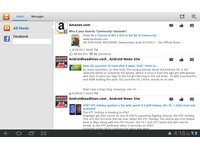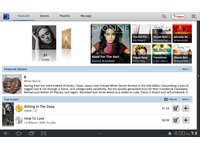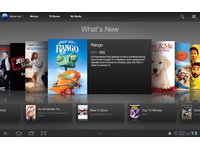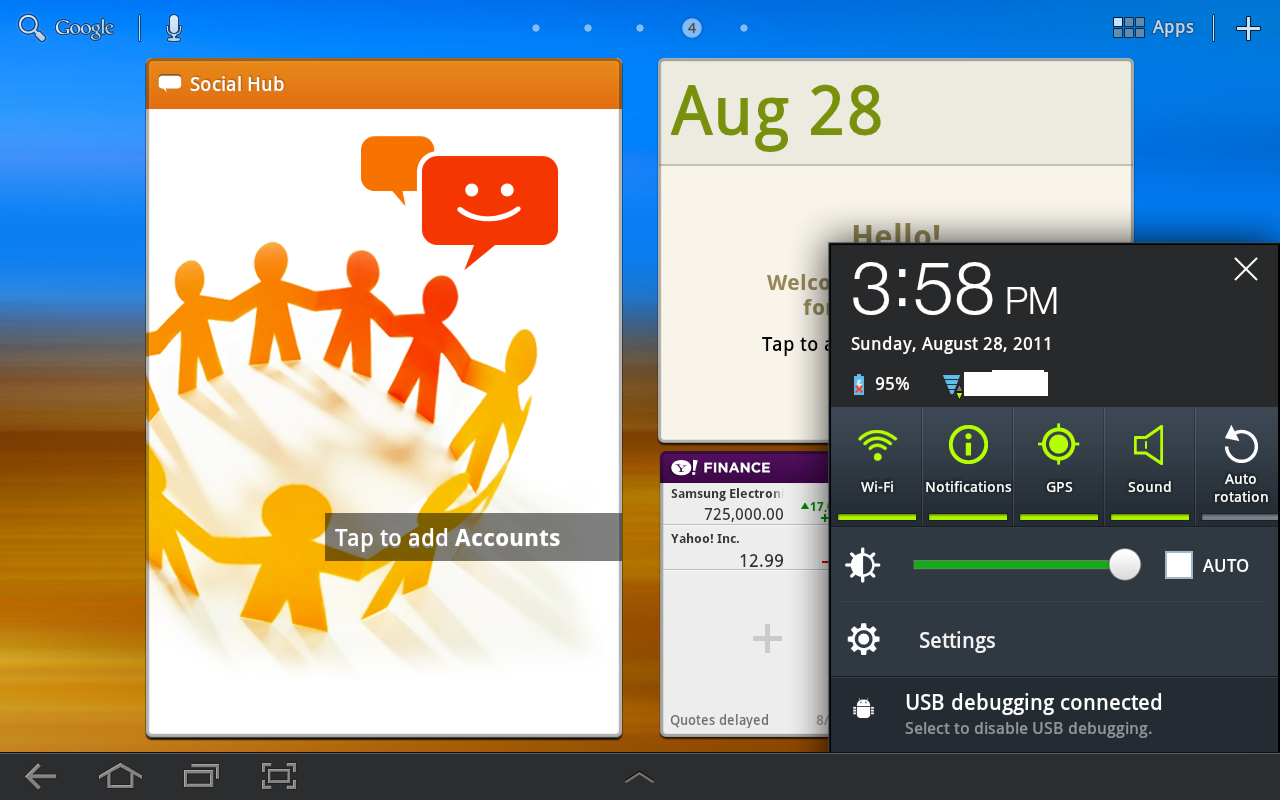Samsung Galaxy Tab 10.1: A Second-Gen Android Tablet
TouchWiz UX: Skinning Honeycomb
We dug deep into the Honeycomb UI when we reviewed Motorola's Xoom. If you're not familiar with Honeycomb, consider starting there. Everything from navigation, app installation, syncing, and screenshots are covered. Briefly, Honeycomb refers to Android version 3.x, a newer release of the operating system than what you'd find on an Android-based phone employing version 2.3 (Gingerbread).
The Honeycomb experience on Samsung's Galaxy Tab 10.1 is fundamentally different from what you get on other tablets. Last month, the company released a software update that applies a skin to its user interface. Dubbed TouchWiz UX, Samsung is the first vendor to offer a completely customized interface to a Honeycomb-based tablet.
Beyond the skin itself, TouchWiz UX differs from the standard Honeycomb interface in the following:
- L!ve Panels: A set of custom widgets and panels similar to what's provided in Honeycomb 3.1 with added functionality for weather and social feeds.
- Mini Apps Tray: A dock-like bar that provides quick access to a calculator, music player, clock, calendar, and task manager.
- Social Hub: An integrated messaging and feed notification application for email, Facebook, Twitter, LinkedIn, and Exchange.
- Reader's Hub: An ebook storefront that allows you to directly download digital books. Samsung claims that it will feature around 2 million books, 2000 newspapers in 49 languages, and 2300 magazines in 22 languages.
- Media Hub: A video-on-demand service (US-only)
- Music Hub: A music-on-demand service (available globally)
- Quick Panel: A larger interface for settings and notifications.


Mini apps are similar to gadgets in Windows 7 and widgets in Mac OS X. The difference is that Android doesn't allow multitasking. So, you can't have the calendar open and continue to type in QuickOffice because each mini app is treated as a discrete program.
Interestingly, Samsung includes a task manager with its TouchWiz update. This lets you eject programs loaded in RAM. It's a feature sorely lacking in Honeycomb that we enjoy in iOS. While Samsung is on the right track, the Task Manager app needs a few tweaks. The program does allow you to close an app, but it doesn't clear the application's thumbnail in the multitasking switcher.



Currently, the Social Hub app supports POP/IMAP email, Exchange, Facebook, Twitter, and LinkedIn. Once you add your accounts, social network updates are treated as RSS feeds. Meanwhile, message subjects appear in a single window, similar to Synergy in webOS.
The integrated social network feed is a convenient way to check, comment on, and provide status updates. However, professionals who are also responsible for managing a corporate social media presence are going to feel handicapped because the app is limited to one Facebook, one Twitter, and one LinkedIn account.
Get Tom's Hardware's best news and in-depth reviews, straight to your inbox.
We like what Samsung did with the social network integration. But the messaging system needs a major overhaul. Communicating between Facebook, Twitter, and LinkedIn is completely integrated in a single interface, while email is not. For example, if I want to read the body of a particular message, clicking on a subject line opens it up in the email app. This is complicated by the fact that Android requires a Google account, which means the Gmail app automatically syncs Google email. If you add your Gmail account to Social Hub, your Gmail account exists in two applications: email and Gmail.



The Media Hub and Music Hub apps are nothing more than on-demand services that let you purchase music, movies, and TV shows in lieu of iTunes. Overall, the selection seems to be pretty darned current. Many of the TV episodes that aired last week were listed and available for purchase.
Personally, I tend to use my tablets to read more than play back video. That's why it was disappointing to find Reader's Hub missing from the TouchWiz update. Samsung couldn't tell us when an over-the-air (OTA) update might be provided, but we're hoping it happens before the end of the year.
The biggest difference in TouchWiz UX is the operating system's notification area. Now everything is displayed in large icons and fonts. In our opinion, it's a more intuitive interface than Google's original take, which is why we hope other tablet manufacturers follow Samsung's footsteps with regard to UI customization.
Understandably, some people prefer vanilla Honeycomb to the TouchWiz interface. Since Samsung provides TouchWiz as an OTA update, you have to disable updates if you want to keep Google's UI. Ideally, Google would provide open access to UI development. It'd be great if we had the freedom to pick and choose themes like we do in Windows 7 and Mac OS X.
Current page: TouchWiz UX: Skinning Honeycomb
Prev Page Meet Samsung's Galaxy Tab 10.1 Next Page Keyboard Enhancements-
killerclick No surprises here, iPad 2 is still on top, being the engineering masterpiece that it is. Take a look at side-by-side comparisons of iPad 2 and Galaxy Tab 10.1 on YouTube and you'll see how much smoother animations and video recording are on the iPad 2.Reply -
Martell77 I'm going to be in the market to buy about 150 tablets soon and from this article it appears that the ASUS 3.2 is the best all around for price/performance/recharge. While it doesn't win alot, it appears to be a consistant performer and has a relativly short recharge time.Reply
Or am I missing something here? -
dthx The reason why Samsung doesn't want to lower it's price is easy to understand: there are many (stupid) persons who are convinced that the iPad is superior to any other tablet just because it's priced higher... Samsung wants to make sure they capture that part of the market.Reply
But the author is right: if there is one reason Apple should sue Samsung, it's for copying the price structure of the iPad! -
Haserath Samsung Galaxy Tab needs a split keyboard feature in portrait mode; it isn't comfortable enough to have to stretch to hit the virtual keys.Reply
The 10.1 is still too slow for certain browsing. Flash is good as long as you don't want to rewind or fast forward through it. It sometimes slows down when I try typing also.
Since Apple produces both hardware and software, they can optimize their OS for the exact hardware they put out.
After trying the Samsung Galaxy Tab 10.1, I would say it's just a little too immature still. A good year or two and tablets will be perfect for browsing, gaming, and some other tasks while also being lightweight and easy to use even compared to laptops. -
Hmmm, many talk about iPad dominance but don't know all the facts. Just looking at a device in the store doesn't cut it folks. Android tablets are going to start cutting into market share, like it or not. For an IT person or true techie, most would choose an Android tablet. 4 core coming soon and they are going to rock the scene. Example: my Acer Iconia costs quite a bit less than iPad2.Reply
-Full USB port for mouse, keyboard, portable hard disks/thumb drives, cameras
-Overclocked and stable dual core CPU @ 1.504 Ghz (big change in performance)
-Customizable and open operating system (and it's going to get better with ICS)
-Honeycomb 3.2
-Netflix and Hulu working
-Mount drives from Linux, Windows, and OSX
-Websites with Flash that look the same as on a PC browser (now theres a concept)
-Wide screen 16:9
-5MP rear camera + front facing camera.
-HDMI out
-Charges back up in 1hr
-
dennisburke Price, proprietary cable management, and lack of expandable storage all lead me to want to wait to see what happens after Windows 8 becomes available.Reply

